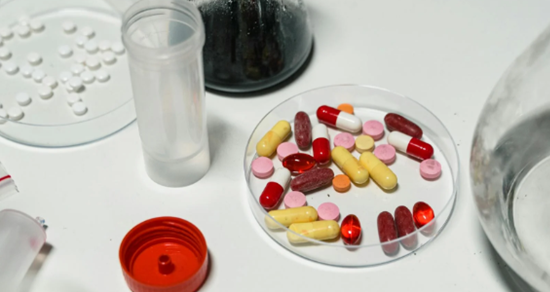
Polypharmacy — the use of multiple medications at the same time, often five or more — is one of the most pressing challenges in dementia care today. For residents living in long-term care or retirement communities, polypharmacy is not unusual.
Many have multiple chronic conditions: diabetes, heart disease, arthritis, depression, insomnia. Each condition can add another pill to the daily routine. Over time, prescriptions pile up.
The result?
A complicated medication list that is difficult to manage, risky for residents, and costly in hidden ways for organizations.
Why Polypharmacy Is a Problem in Dementia Care

Increased Risk of Side Effects
Many medications cause drowsiness, dizziness, or confusion. For a person with dementia, these side effects can look like worsening of their disease — when in reality, the drugs are making things worse.
Higher Fall Risk
Sedatives, sleep medications, and antipsychotics increase the risk of falls, which can lead to hospitalization, staff injury, and liability exposure for the organization.
Responsive Behaviors Worsened
Ironically, medications intended to “calm” behaviors can backfire — increasing agitation, disorientation, or paranoia. Staff then struggle with more behaviors, not fewer.
Staff Workload and Stress
More medications mean more administration, more monitoring, and more documentation. Polypharmacy drains staff time and attention that could be used for meaningful engagement.
Family Distrust
Families notice when their loved one is overmedicated. A resident who appears constantly sedated or disengaged undermines confidence in your care community.
How Montessori Inspired Lifestyle® Helps Reduce Reliance on Medication
(See chart below)
 Montessori Inspired Lifestyle® (MIL) does not replace the need for medications — but it changes the environment and daily life so that drugs are less often used as the default solution. Here’s how:
Montessori Inspired Lifestyle® (MIL) does not replace the need for medications — but it changes the environment and daily life so that drugs are less often used as the default solution. Here’s how:
Engagement Reduces Distress
Residents are given meaningful roles, routines, and activities tailored to their abilities. With less boredom and frustration, the behaviors that often trigger prescriptions (agitation, calling out, wandering) decrease.
Predictable Routines Lower Anxiety
Montessori environments emphasize structure and clarity. When residents know what to expect, they are calmer and require fewer sedatives or anti-anxiety medications.
Positive Social Roles Improve Mood
Depression and withdrawal often lead to antidepressant use. MIL provides purpose and connection — natural antidepressants with no side effects.
Staff Gain Tools Beyond Medication
Training equips staff to interpret behaviors and respond with strategies other than “call the doctor for a pill.” Over time, prescribing patterns shift toward non-pharmacological solutions.
Families See Real Alternatives
Families are reassured when they see their loved one alert, engaged, and active. They are more willing to support deprescribing initiatives when engagement is visibly effective.
The Organizational Benefits
- For operators, the shift away from polypharmacy pays off in multiple ways:
- Fewer falls and related staff injuries.
- Reduced regulatory scrutiny over psychotropic use.
- Lower staff workload from medication administration.
- Stronger family satisfaction and trust.
- A more stable, engaged resident population.
Polypharmacy is not just a clinical issue — it is an organizational and reputational risk.
The overuse of medications can destabilize residents, exhaust staff, and erode family trust. Montessori Inspired Lifestyle® offers a clear alternative. By creating prepared environments, meaningful roles, and predictable routines, MIL addresses the root causes of behaviors that often lead to prescriptions.
The result?
Residents who are more engaged, families who are more satisfied, staff who are less stressed, and organizations that are better positioned for stability and success.
Want better solutions…take a look at the details about these convenient online conferences…
Engage and Empower: Purposeful Activity Design for All Stages
Learn how to create and present adapted activities. Click here for details and/or registration.
Beyond the Behavior: Preventing and Managing Responsive Behaviors
Learn how to manage responsive behaviors proactively, with greater insight — and how to begin reducing their frequency over time using Montessori-based techniques. Click here for details and/or registration.
Comparison Chart: Current Approaches vs. Gaps vs. Montessori Inspired Lifestyle®
| Approach | What Organizations Are Doing Now | The Gaps/Limitations | How Montessori Inspired Lifestyle® Closes the Gap |
| Medication Reviews | Regular pharmacist-led reviews to reduce inappropriate prescribing. | Often reactive; relies on prescribers’ willingness to deprescribe; doesn’t change daily triggers for behaviors. | MIL reduces the triggers (boredom, confusion, lack of purpose), so there’s less need for prescribing in the first place. |
| Non-Drug Activities | Music therapy, Snoezelen, pet visits, exercise classes. | Helpful but often episodic, not embedded into daily life; staff see them as “extras.” | MIL integrates meaningful engagement into every routine, turning daily life itself into a non-drug intervention. |
| Staff Training | Training modules on responsive behavior management and “try non-drug options first.” | Knowledge fades without a system; staff under stress default back to medication requests. | MIL provides a structured system staff can rely on every day, reinforcing skills and reducing stress. |
| Family Education | Informing families about risks of antipsychotics and gaining consent. | Families may feel there are no real alternatives, leading to pressure on physicians to medicate. | MIL demonstrates visible alternatives — families see their loved one calm, engaged, and purposeful without drugs. |
| Regulatory Pressure | Tracking and publishing rates of inappropriate use. | Creates awareness but can drive “numbers games” instead of meaningful change. | MIL drives authentic culture change, not just compliance — results show up in quality of life, not just stats. |
| Culture-Change Programs (non-MIL) | Some homes adopt models like the Butterfly Model. | Often focus on environment and emotional connection but lack structured, replicable systems for staff. | MIL is both philosophy and operational framework, providing staff with tools to consistently deliver non-drug alternatives. |
✅ Currently, many are trying but what they are doing is often fragmented and insufficient.
✅MIL turns good intentions into a consistent system that reduces antipsychotic reliance in a measurable, reportable way.




